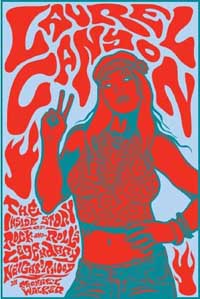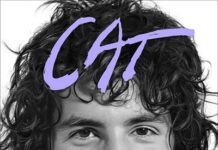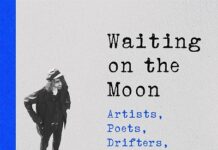The last time I was in the popular music section of the local Barnes &
Noble, I took stock in the number of tomes written about rock and roll. For
one, there are far too many books written about the Beatles. There couldn’t
possibly be any piece of information, no matter how trivial, that hasn’t
bubbled to the surface about the Fab Four. And if there is, I’m not sure
I want to know about it. Of course, rock bios pretty much dominate the entire
popular music section. Still, there are a number of scribes who have gone to
great lengths uncovering little known rock and roll tidbits and artifacts. The
recently released Laurel Canyon by Michael Walker is a worthy
example of this type of journalism.
Of all the rock and roll neighborhoods you hear about — from Liverpool
to Haight Ashbury — Laurel Canyon is the one that straddles a fine line
between bohemian rhapsody and bizarre lunacy. Walker presents the colorful characters
and events of the canyon and its surroundings, from the 60s through the 80s,
with stunning detail and care. The journey begins through the eyes of Chris
Hillman, who graduated from broke bluegrass musician to the bass player for
the Byrds, all while residing in the inspiring hinterland of Laurel Canyon.
When other Byrds migrated to the area, notably David Crosby, Laurel Canyon took
on a mystical air of rock and roll debauchery and mayhem.
Walker digs in his heels chronicling the Tom Mix log cabin that Frank Zappa
and his band of wackos and freaks rented. Despite the fact that Zappa himself,
busy with his wife and kids, abstained from alcohol and drug use, his household
served as virtual cornucopia of wild creativity fueled by an even flow of stimulants
of one variety or another. Even so, the cabin also played host to many up-and
comers along with the occasional card-carrying member of rock and roll royalty
— ranging from Alice Cooper to John Mayall to Mick Jagger. Zappa’s
widow Gail aptly describes the cabin and its scene in the book as “a house
not a home,” but stills reminds us that her husband was at the height
of his creative powers during that period.
Eventually, Laurel Canyon became a breeding ground of sorts for artistry, domesticality,
and craziness. Crosby, Stills and Nash would sing for the very first time in
Cass Elliot’s Laurel Canyon living room. Graham Nash would later play
house with Joni Mitchell just up the street. The Turtles’ Mark Volman
settled in and raised a family. Yet, darkness descended over the canyon. First
it was drugs, particularly cocaine. This was followed by the grisly death of
Sharon Tate and her party guests at the Laurel Canyon home she shared with Roman
Polanski. The apprehension of Charles Manson ands his rogue “family”
of worshipers could barely contain the level of anxiety that would pervade the
canyon for years to come. The Wonderland Avenue murders almost 20 years later
did little to temper the mood. But the canyon and its loyal inhabitants remain
united on enough positive fronts to maintain its charm and allure.
There are passages in the book when it’s evident Walker is wrestling
with his subject matter, trying to squeeze every juicy factoid dry and dropping
as many names as possible. The author also tends to veer off the map at times,
venturing down into Hollywood for extended periods to explore the haunts and
hedonistic ways of various rock gods, their entourages and their groupies. While
this in itself makes for some enticing reading, the tie-in to Laurel Canyon
is somewhat vague, almost non-existent. The book, in fact, does a more remarkable
job covering the whole of Los Angeles, which stretches far beyond the canyon
walls in every direction for miles. Nevertheless, be it L.A. or the isolation
of the canyon, Laurel Canyon is a good and solid read for any
pop culture and music enthusiast who may be eager to break away from studying
the talents of one and soak up the environment that nurtured the talents of
many.
~ Shawn Perry




















